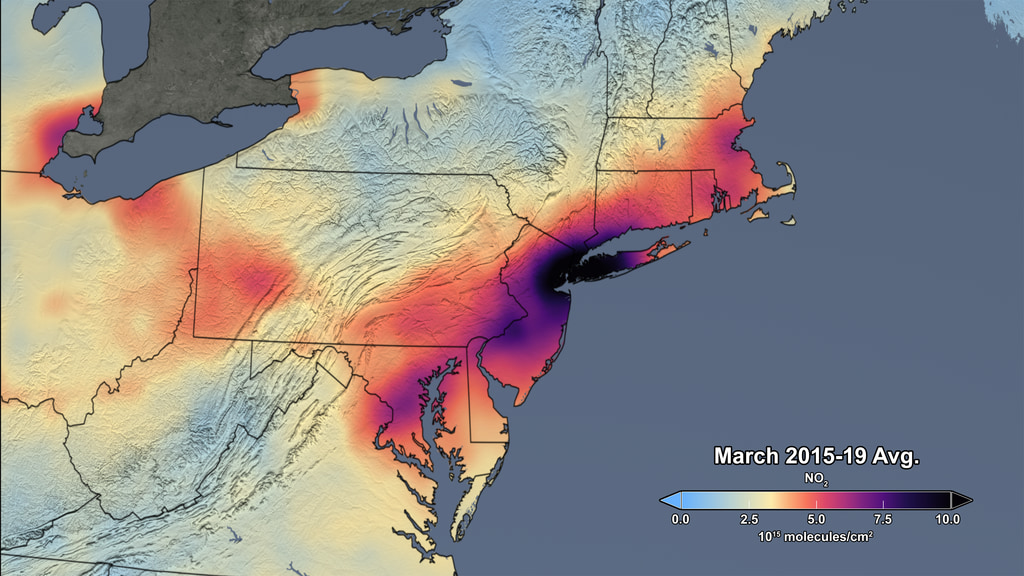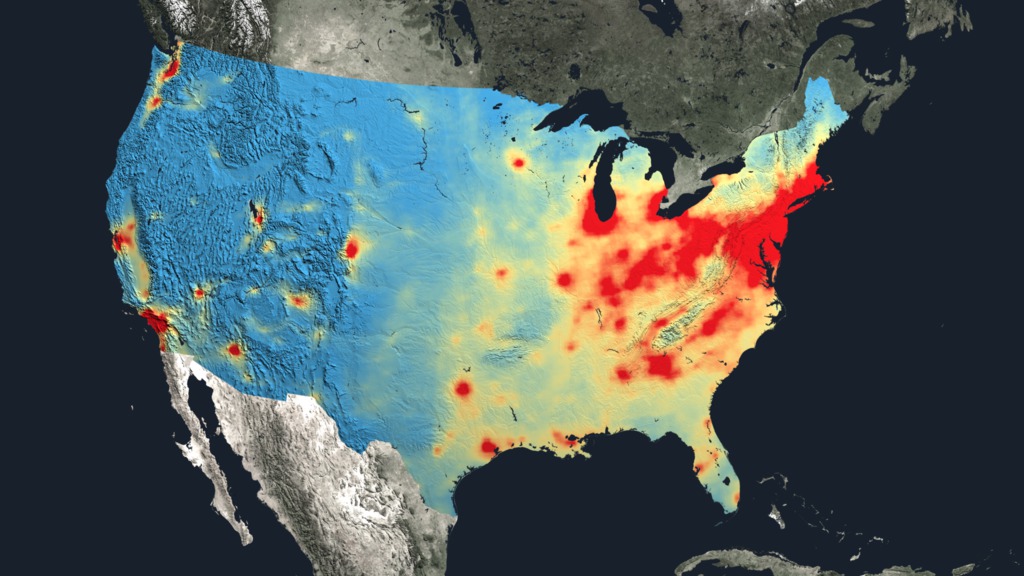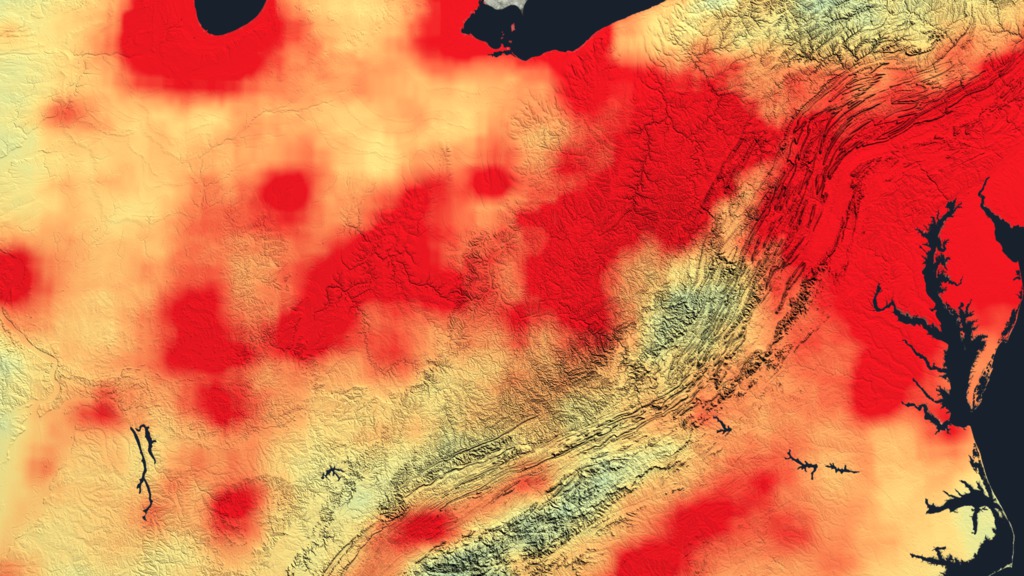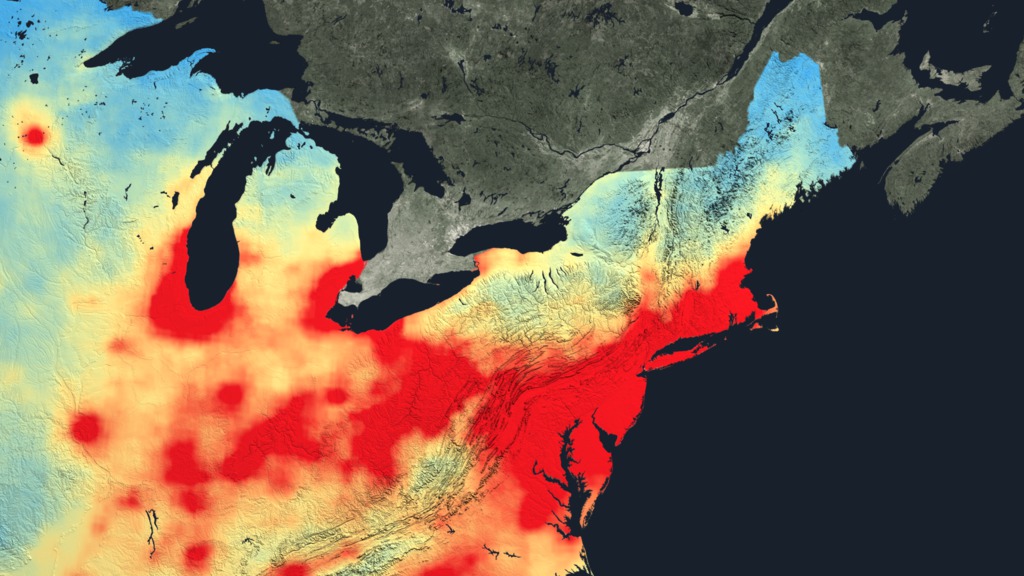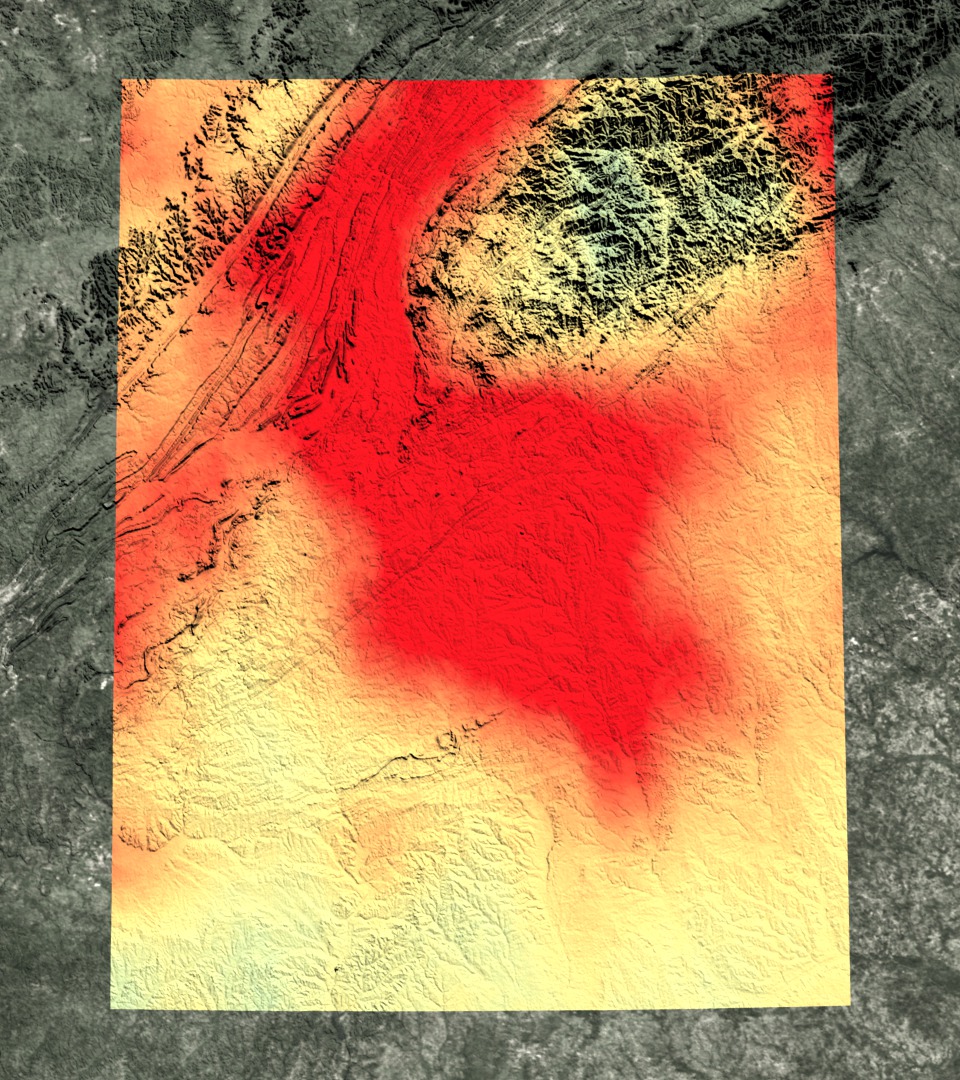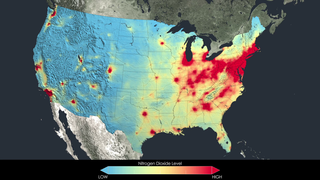Nitrogen Dioxide Reduction Across the Northeast Corridor
Anyone living in the U.S. for the past decade may have noticed a change in the air. The change is apparent in NASA satellite images that demonstrate the country's reduction of air pollution, or more specifically, nitrogen dioxide.
Nitrogen dioxide can impact the respiratory system, and it also contributes to the formation of other pollutants including ground-level ozone and particulates. The gas is produced primarily during the combustion of gasoline in vehicle engines and coal in power plants. Air pollution has decreased even though population and the number of cars on the roads have increased. The shift is the result of regulations, technology improvements and economic changes, scientists say.
This visualization shows tropospheric column concentrations of nitrogen dioxide as detected by the Ozone Monitoring Instrument on NASA's Aura satellite, averaged yearly from 2005-2011. Blue and green denote lower concentrations and orange and red areas denote higher concentrations, ranging from 1e+15 to 5e+15 molecules per square centimeter, respectively.
Pollution builds up along the U.S. East Coast as it passes from one city to the next, particularly in the Northeast Corridor. These cities include Richmond, Washington, D.C., Baltimore, Philadelphia, New York City, Boston and all the smaller cities in between. Some of the largest absolute changes in nitrogen dioxide have occurred in this corridor.
This visualization shows nitrogen dioxide data only.
This visualization shows nitrogen dioxide data with state lines.
This visualization shows nitrogen dioxide data with major roads.
This visualization shows nitrogen dioxide data with state lines and major roads.

This still shows nitrogen dioxide data averaged over 2005.

This still shows nitrogen dioxide data averaged over 2011.

This still shows nitrogen dioxide data, averaged over 2005, and state lines.

This still shows nitrogen dioxide data, averaged over 2011, and state lines.

This still shows nitrogen dioxide data, averaged over 2005, and major roads.

This still shows nitrogen dioxide data, averaged over 2011, and major roads.

This still shows nitrogen dioxide data, averaged over 2005, as well as major roads and state lines.

This still shows nitrogen dioxide data, averaged over 2011, as well as major roads and state lines.

Color bar
Credits
Please give credit for this item to:
NASA Goddard's Scientific Visualization Studio
-
Animator
- Trent L. Schindler (USRA)
-
Producer
- Kayvon Sharghi (USRA)
-
Scientists
- Bryan Duncan (NASA/GSFC)
- Lok Lamsal (USRA)
- Yasuko Yoshida (SSAI)
-
Project support
- Aaron E. Lepsch (ADNET Systems, Inc.)
-
Writer
- Kathryn Hansen (Wyle Information Systems)
Release date
This page was originally published on Thursday, June 26, 2014.
This page was last updated on Wednesday, May 3, 2023 at 1:50 PM EDT.
